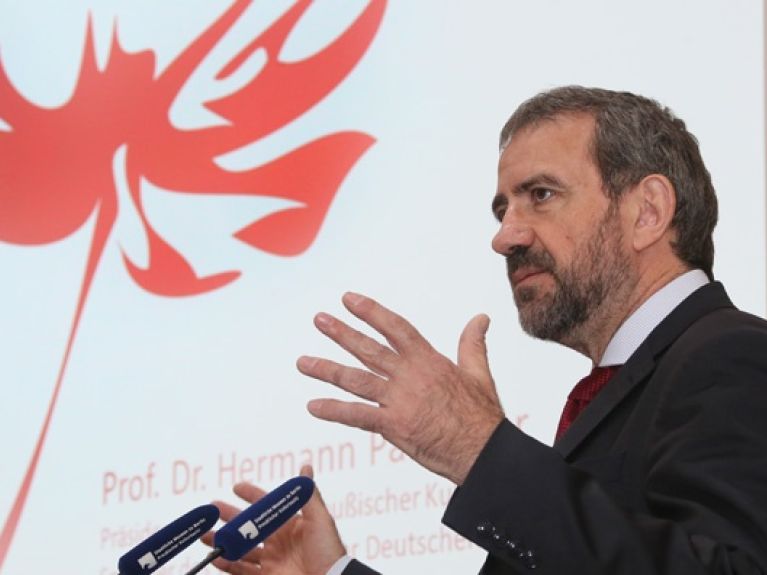“Our target group is everyone”
Hermann Parzinger, President of the Prussian Cultural Heritage Foundation, advocates digital access to culture.

Mr Parzinger, have you ever visited an online museum?
Of course, I’ve taken a virtual tour of museums that offer that option on their websites.
What do you think of such options?
I think they’re very important. If you’re interested in a museum and thinking of visiting it, you normally go to the website first. Surveys have shown that people make up their mind about whether to visit a specific museum based largely on the attractiveness of its website.
Doesn’t providing digital access cause interest to wane in the real thing?
On the contrary, digitisation and the resulting broader dissemination of museums’ offerings will increase interest. Virtual tours can never replace the genuine experience – the original has an aura that is unsurpassable. There’s a fundamental difference between standing in front of a Picasso and looking at it on a computer screen. But the digital version is an important aid and promotion tool.
Is digitisation also a way of reaching new target groups?
I’m absolutely positive that it’s a way to appeal to an even wider audience – and probably the best way to reach young people in particular and groups other than your typical educated middle-class museum visitors. The Deutsche Digitale Bibliothek (DDB, German Digital Library), for example, targets a wide variety of groups: children, adults, students, leading researchers and people from a whole range of occupations.
Apart from providing round-the-clock mobile access to content, what advantages does the DDB offer over conventional libraries?
It brings together cultural assets that are divided into different categories and kept at different institutions and puts them into an overall context. It’s now possible to search by specific terms or topics among ten million digital items from museums, libraries, archives and cinematheques. If you’re interested in Mozart, for example, you can find books on his oeuvre, portraits, manuscripts, scores and recordings of his works from different periods. The ability to access such a wide variety of items is a tremendous boon. What’s more, the DDB vouches for the quality of the content with all the expertise that Germany’s academic and cultural institutions offer.
It’s not just a question of making cultural heritage accessible but also of preserving it. You’re an archaeologist and a former president of the German Archaeological Institute (DAI), which is a pioneer in digitisation. Why are such projects important?
Once artefacts have been excavated by archaeologists, they no longer exist in their original form. That’s why it‘s crucial to document the excavation process – for the purposes of evaluation and reconstruction and to determine their cultural and historical significance. And that’s why it must also be preserved in digital form. In the case of very delicate cultural assets, the digital version is also a great help because it means that the original item is handled less. Researchers no longer have to travel long distances to view a document. They can access it on their computer at home, which enables them to carry out a significant portion of their research on the spot.
What difficulties does digitisation entail?
Our main concern is with copyright issues. In Germany, it is right and proper – and important – that all works are protected by copyright. There are, however, some unresolved issues – for example, how to deal with orphan works whose right-holders are no longer traceable. If cultural institutions now digitise orphan works on a large scale and right-holders do eventually claim their rights, it can put these institutions in a difficult financial position. This point needs to be further clarified because we want to be able to make available not only works from, say, the 16th century, where there are no copyright problems, but also contemporary ones.
You cooperate closely with other institutions in European organisations like Europeana. Why?
The DDB is the national portal of Germany’s cultural institutions, but its content should also be accessible via Europeana. This interface is important. If art, culture and knowledge are to be available at all times from every place in the world, it’s crucial that these portals are interconnected. That’s a task for the whole of Europe – nay for the entire world. ▪
Interview: Helen Sibum

